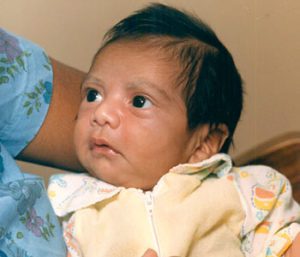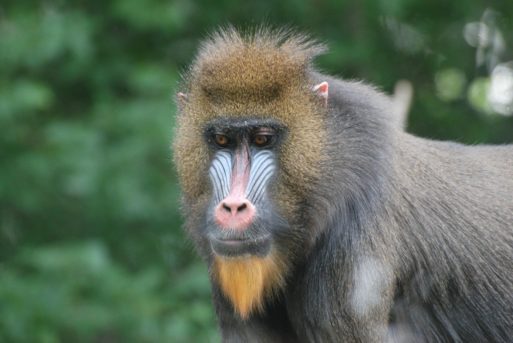
David Bennett watches the Superbowl with his physical therapist one week after receiving a transplanted pig heart.
Credit: University of Maryland Medical Center
David Bennett, 57, the first recipient of a pig-to-human heart transplant, died earlier this month after surviving just over 2 months with his transplanted heart. He received the transplant from a pig that had been genetically modified to make it less likely that Bennett’s immune system would attack the organ. A phenomenon known as rejection, this immune response is triggered by the body’s ability to recognize and destroy foreign DNA, and it is the major limiting factor in cross-species transplantation.
Bennett was far from the first human to undergo a transplant from a non-human donor. As far back as the 1960s, several surgeons experimented with transplanting primate kidneys into human patients, starting with Dr. Keith Reemtsma, then of Tulane University. Dr. Reemtsma transplanted chimpanzee kidneys into 13 patients in end-stage renal failure who were — in his estimation — doomed to die. Sadly, 12 of the 13 patients died within 4-8 weeks, either from rejection or infection — likely a result of immunosuppression caused by anti-rejection drugs. But one survived for nine months, even returning to work as a teacher for a short time before she suddenly collapsed and died. An autopsy showed that the chimpanzee kidneys were working well at the time of her death.
Following in Reemtsma’s footsteps, Dr. Tom Starzl transplanted baboon kidneys into 6 human recipients. However, none of the patients survived longer than a few weeks.

Baby Fae lived 20 days after receiving a transplanted baboon heart.
Credit: snipview.com
Then, in perhaps one of the most famous cases of non-human-to-human transplantation, Dr. Leonard Bailey transplanted a baboon heart into an infant girl, known as Baby Fae, in 1983. The transplant seemed justified, since it was all but impossible to find an infant organ donor at the time, and the child had a congenital heart condition that was certain to result in her death. Sadly, despite receiving powerful immunosuppressants, Baby Faye died from acute rejection of the donor heart after just 20 days.
Still, Baby Fae’s tragic death served to raise public awareness of the need for infant organ donors, and Bailey subsequently went on to develop a thriving practice transplanting deceased infant donor hearts into critically ill babies.
A Race Against Time
Despite those early failures, the paucity of human organ donors has been driving researchers to study non-human-to-human organ transplantation (also known as xenotransplantation) for many years. Due to the ethical concerns of performing experimental surgeries on human recipients, much of that research has been performed on non-human primates, notably baboons. Using the genome editing capabilities of CRISPR and specially raised pigs, researchers have experimented with numerous gene modifications to learn which ones were most likely to limit rejection while also causing little harm.
According to Scientific American, some of the transplanted baboons lived up to 6 months before they were euthanized.

Baboons have lived over 6 months with hearts transplanted from pigs.
But baboons aren’t humans, and researchers have been desperately seeking an opportunity to learn how the genetically modified organs would perform in a human recipient. So researchers at the University of Maryland Medical Center applied to the FDA for permission to transplant a pig heart into a human subject. But the agency denied their request, wanting more animal studies before allowing a human xenotransplant to proceed.
Then Bennett’s case came to light. Terminally ill with heart failure and an irregular heart rhythm, he had been kept alive on life support at University of Maryland Medical Center for two months. After he was deemed ineligible for a human heart due to a history of noncompliance with medical instructions, Dr. Muhammad Mohiuddin approached him and his family with the prospect of the experimental surgery. With no other option available to him, Bennett agreed.
At first, the new heart seemed to be performing well, and Bennett’s immune system seemed to be tolerating the transplant and the anti-rejection drugs. But in early March his condition began to deteriorate rapidly. Choosing to forgo any further aggressive intervention, Bennett died in the hospital with his family at his bedside on March 8, 2022.
An Enormous Contribution

David Bennett, Sr.
Credit: The Bennett family
Despite its unfortunate outcome, Bennett’s surgery gave researchers and the over 100,000 patients awaiting organ transplants in the U.S. a measure of hope. His contribution to the growing body of knowledge about management of organ transplantation can’t be overstated, according to those involved. “We have gained invaluable insights learning that the genetically modified pig heart can function well within the human body while the immune system is adequately suppressed,” said Dr. Mohiuddin. “We remain optimistic and plan on continuing our work in future clinical trials” he added.
Dr. Bartley P. Griffith, the clinical director of the Cardiac Xenotransplantation Program at the University of Maryland School of Medicine and the physician who performed Bennet’s surgery, had this to add: “We are devastated by the loss of Mr. Bennett. He proved to be a brave and noble patient who fought all the way to the end. We extend our sincerest condolences to his family.”
It may be some time before the next pig-to-human heart transplant takes place. But it will be a tribute to Mr. Bennett’s courage and spirit when it does.

 The First Pig-to-Human Heart Transplant Recipient Has Died
The First Pig-to-Human Heart Transplant Recipient Has Died


 How Dare You Die Now!
How Dare You Die Now!

 “Help Me, Helen”
“Help Me, Helen”














